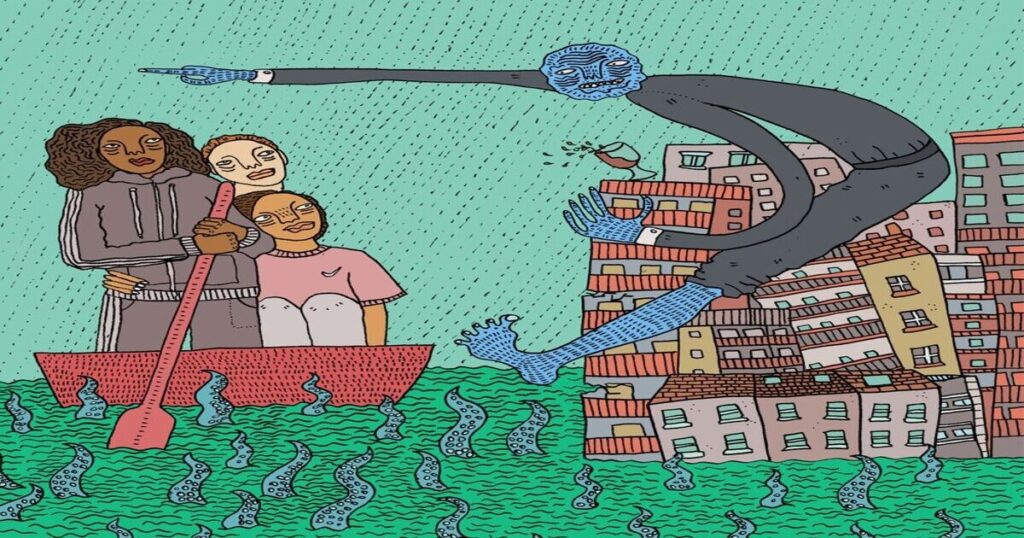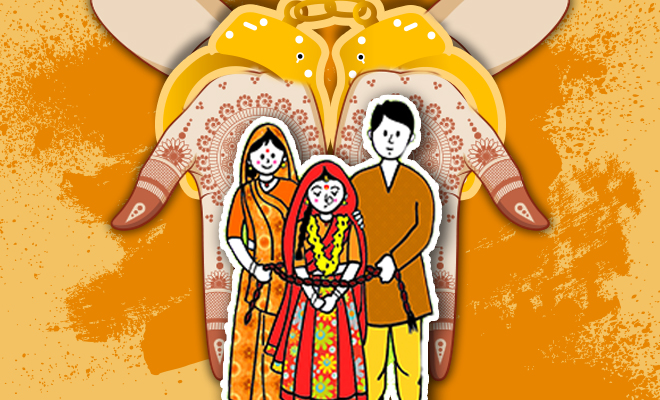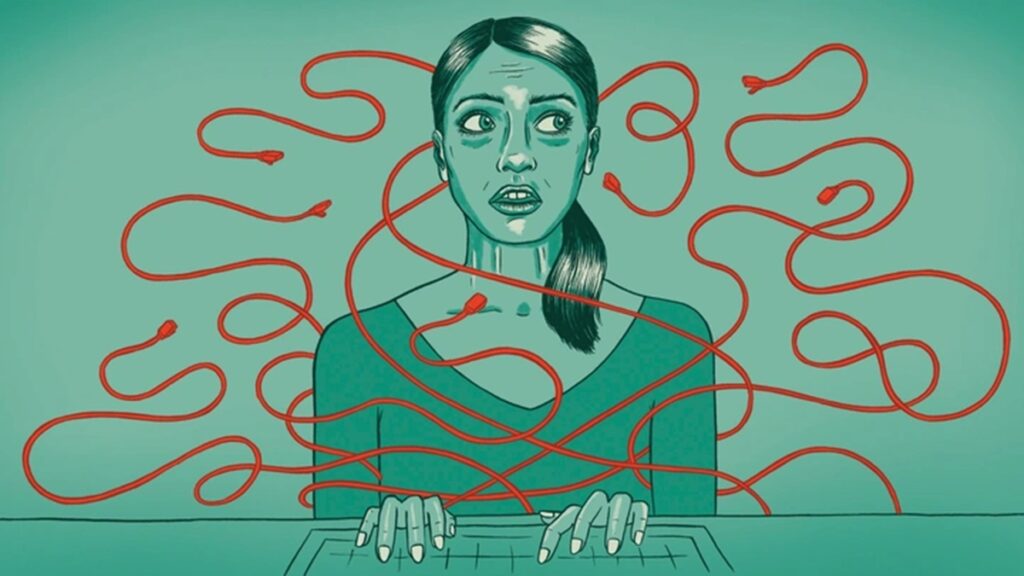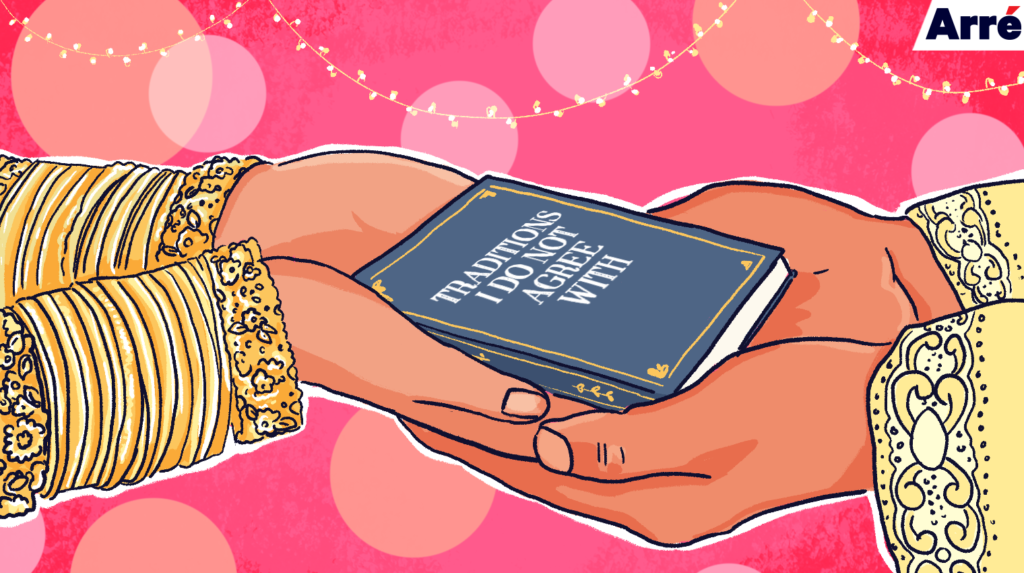Patriarchal Pretense of a Modern Family
“I live in a modern, educated family,” said at least someone once in your life, maybe even yourself. Anyone with parents who do the bare minimum and read and participate in active discussions regarding social and political context claims themselves to be belonging to a modern family. Decoding the emphasized words here, a modern person is one who departs from traditional values and beliefs. An educated person is one who has acquired knowledge, values, and skills. But are modern and educated mutually inclusive terms? Does a ‘modern and educated’ family really hint a family that treats sons and daughters, husbands and wives the same?
Masked Modern Family
Even if we live in a family where a daughter’s education is as important as the son’s education and both are treated with ‘equal love and care’, this doesn’t eliminate the possibilities of patriarchy. The thing about patriarchy is that it isn’t always stripped and unclad, its internalized and veiled nature often makes us overlook right past it. While tad bits of patriarchy making their cameo here and there isn’t as bad as the blatant expose of it, it’s still patriarchy.
Ever since birth, women see other women talk about marriage and watching films in which young girls fantasize about getting married. Unintentionally, young girls always grow up surrounded by the idea that marriage is their destiny. At different times of their lives, women are often reminded by their parents of their marriage.

Milestone of Marriage
Patriarchy refers to the continued existence of pervasive, seemingly ineradicable inequality. This internalized patriarchy and misogyny reflects in the ways parents treat, talk, and behave with their children. Most of us tend to look right past it because of the normalization of this unequal power dynamic and the designated gender roles that have existed for years. Patriarchy has extensively bloomed in parlance and popular culture. Knowingly or unknowingly, feminists have argued that nuclear families force women in subservient roles and socialize women into accepting the “housewife” role as the only possible/acceptable role for a woman.
The mention of marriage is implicit. Imagine a girl asking parents for allowances and in response parents aggressively telling the girl that she may get as many allowances as she wishes after marriage. Even in the latent sense, women are always suggested and reminded of marriage. For daughters, marriage is considered to be a milestone, while for sons, marriage is considered a pitstop, showing the power and dominance in the hands of the males and the subservient nature of a woman. This clearly indicates and illustrates that young women are still made to think that their only purpose in life is to serve a man and that creates a perfect environment to foster patriarchy.

Power of Patriarchy
It’s not unusual for there to be disagreements and spats amongst children and parents. A squabble, often thought of as casual and irrelevant, reflects the difference in ways in which daughters and sons are treated. When our daughters do speak up for themselves albeit hesitantly, we may call them out on talking back to their parents without realizing how our criticism often leads them to internalize “negative” emotions and choose to silence their voice in order to please the people around us.
On the other side, the argument or the actions of a boy being treated with the “boys will be boys” mentality. This leads to a vicious cycle where boys’ actions and aggressive nature is justified by a stereotypical image of a boy and excuses them of taking accountability for their actions. Daughters are often told by their parents to wear a certain length of clothing for their own safety, and while that’s a reasonable assertion given the condition of the country for the women, it still emphasizes more on the precaution and less on the treatment. Precaution is necessary, but so is the treatment.

Fuss of Festivities
In the name of religion and traditions, we tend to propagate culturally patriarchal ideologies as well. The famous festival of Raksha Bandhan celebrated primarily in northern India, where a brother promises to protect his sister underestimates the capability of women to protect themselves and the people around them, putting her in a weaker, more vulnerable position. Similar is the festival of Karvachauth, where married women are expected to fast the entire day, not even letting themselves drink water, so that their husbands, may live a thousand years. Instead of promoting partnership, it promotes and perpetuates subordination and servility.
Children grow up participating and celebrating these festivals and rituals, internalizing the ‘need’ to participate in these festivals, looking forwards to partaking in these rituals. Whenever the children question the rationality of these festivals, they are greeted with petty excuses of how these festivals are the very culture of India and how traditions don’t have to be questioned but followed, for the sake of their sanctity.

Conclusion
Posing a simple question here, who is responsible for dealing with and with the activities of the domestic help? More often than not, the answer to this question is the mother. Even working mothers complain of how they don’t just carry the burden of the job but that of dealing with the domestic work and the children. Even the privilege of working after marriage doesn’t exempt women from the homely duties. From groceries to cleaning to cooking, the sole responsibility falls on the shoulders of the women. The worst part is that women in most places don’t even recognize the lack of appreciation, monetary or verbal, and the intensity of workload they have. Unpaid and invisible household work is often foisted on women in India and often sold in the disguise of gender roles.
The responsibilities of being a parent should be put on both parents, from the moment of conception and on; neither parent should ever give more responsibility to the other. The responsibility of being a house-maker should be on each adult who lives in the house: Neither one should be given more responsibility than the other. Today even in a modern and educated house, patriarchy thrives and burgeons. It festers and carves itself in the walls of our house, impacting the family and parental dynamics and changing the ways in which generations will function.
Featured Graphic Designer: Vaibhavi Pant
Author

